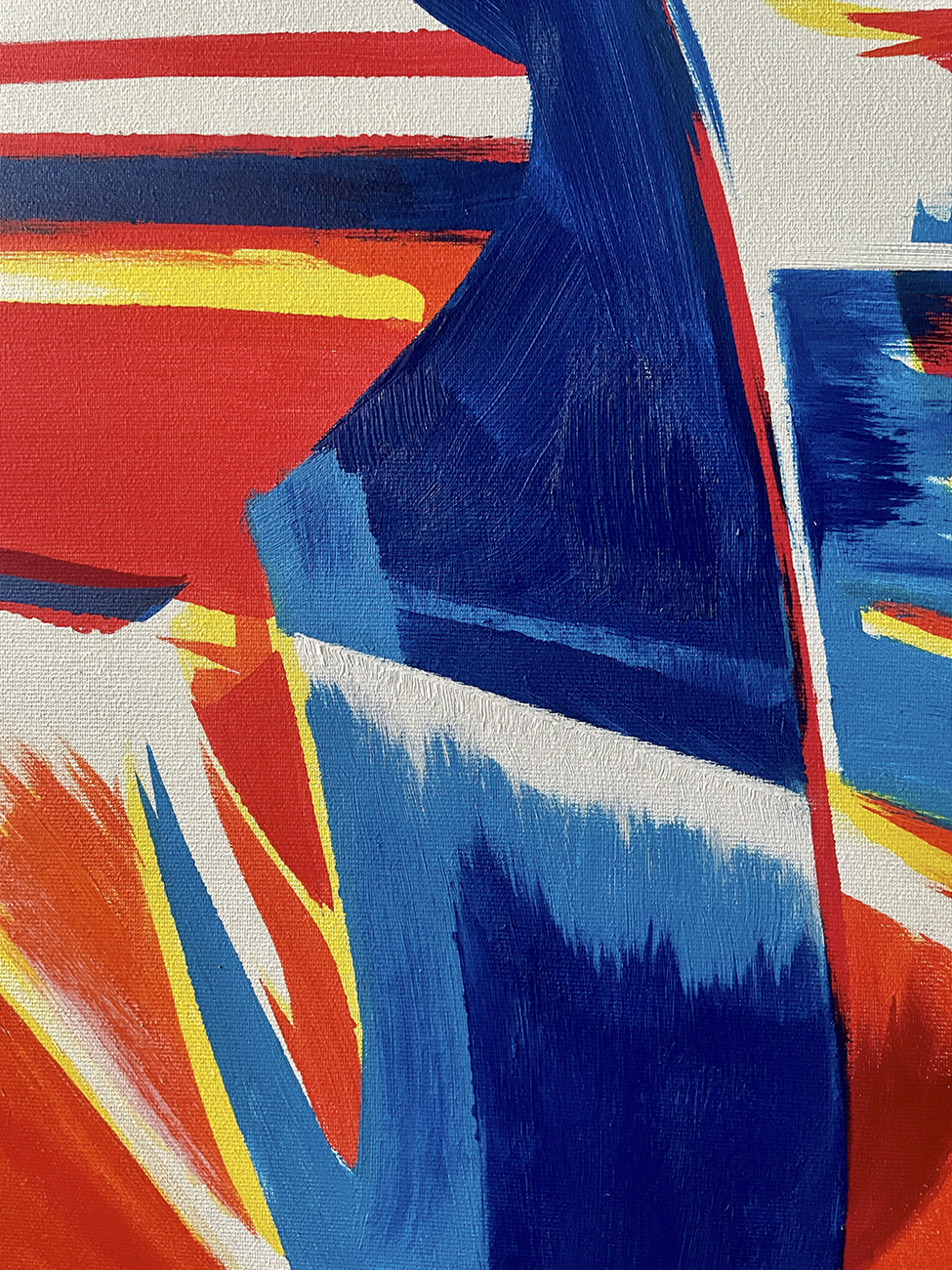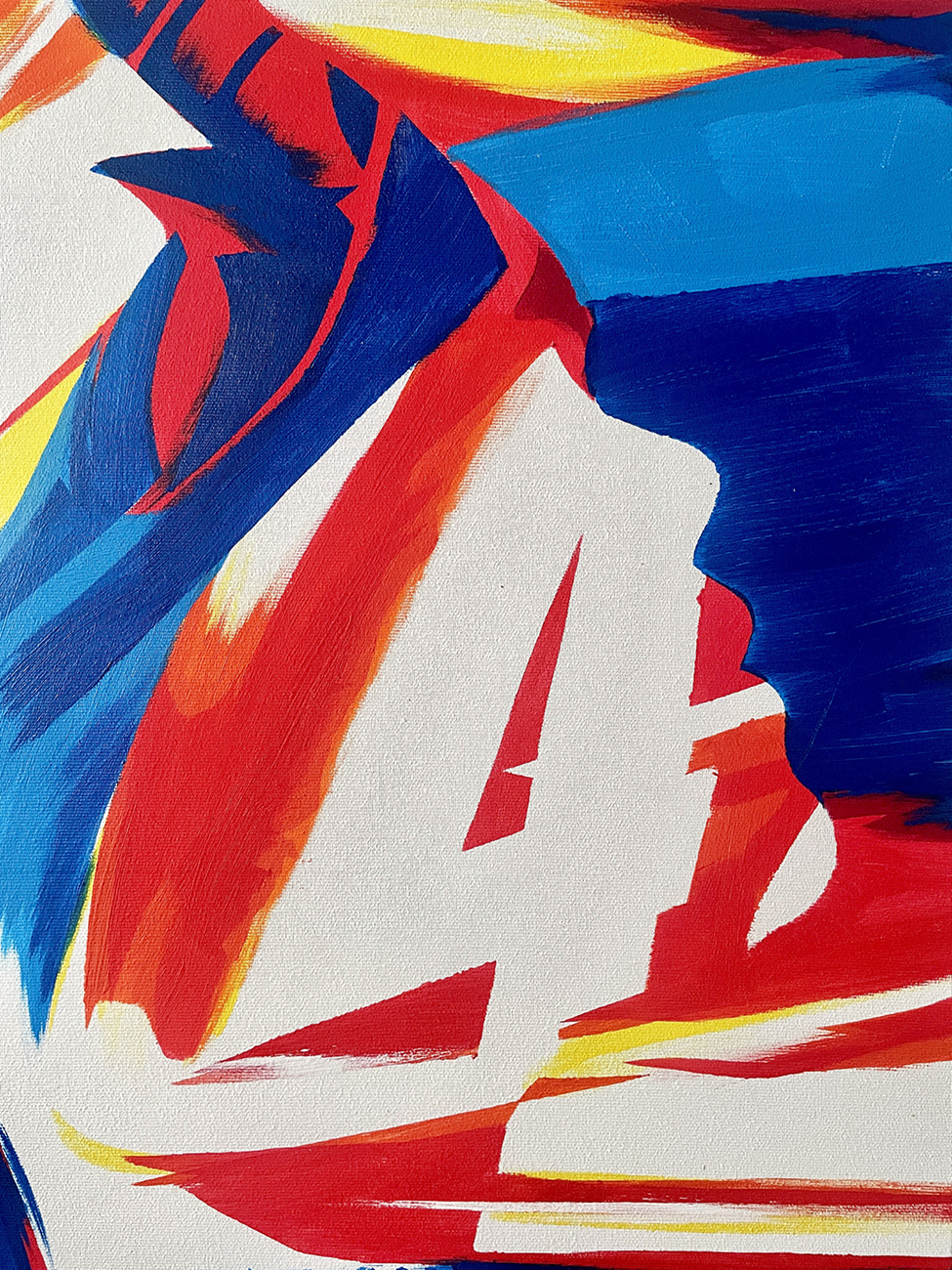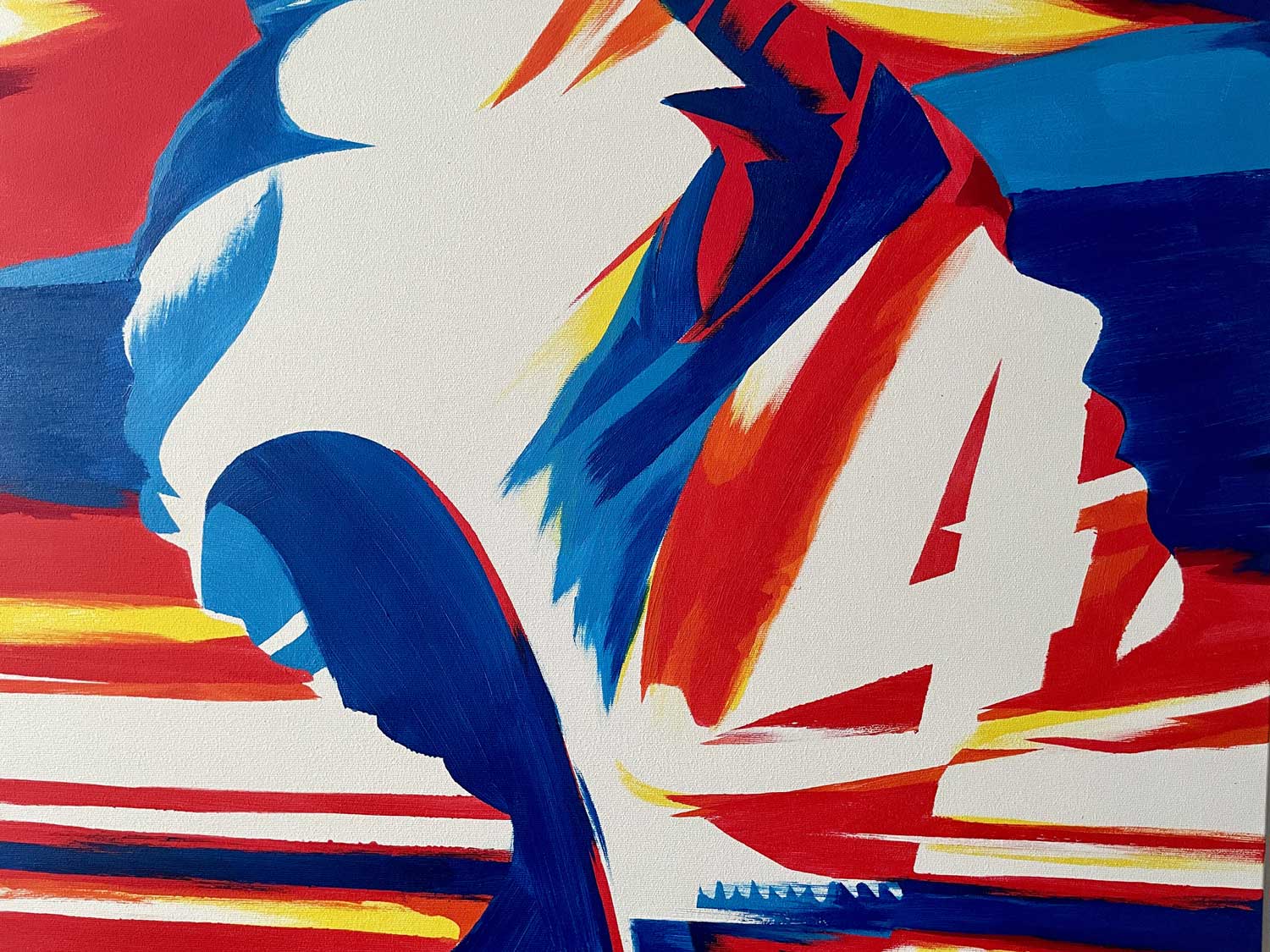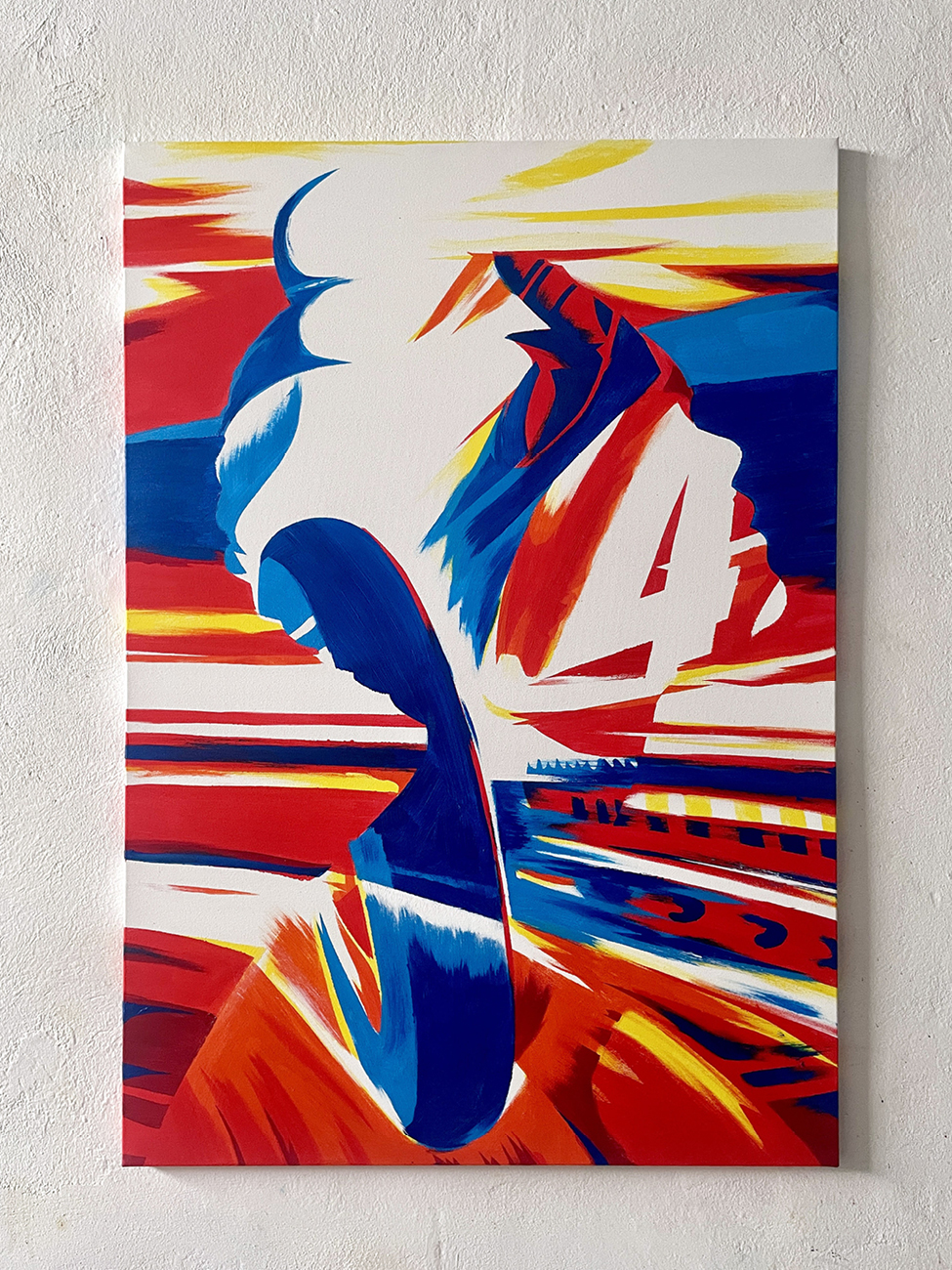Quadrivium




Quadrivium acrylic on canvas 70×100 cm – 2025
At first glance, Quadrivium strikes the viewer like a suspended explosion—an optical shockwave frozen in time. The eye is immediately drawn into an apparently chaotic dynamism: lines chasing, colliding, intertwining in a centrifugal dance. The colors—fiery red, deep blue, solar yellow, blinding white—are not mere pigments, but living forces, primordial energies. There is no rest, no immediate focal point: everything flows, everything pulses.
The work originates as a free pictorial reinterpretation of the iconic 1931 Monaco Grand Prix poster by Robert Falcucci. What remains is not the image itself, but its echo—a fragmented and transfigured dynamism, a historic icon deconstructed and rebuilt in abstract, symbolic form. It is not a citation, but a starting point for an entirely different visual investigation.
Yet at the heart of this vortex, the number 4 emerges with force and clarity. Not added, not imposed, but etched into light—like a revelation. It is the key. Its placement is not decorative but structural: the number 4 becomes the invisible axis around which the composition rotates. In many ancient cultures, four represented Earth, materiality, and foundation. It is the number of structure—think of the square, the cross, the four cardinal points, the seasons, the elements. It speaks of boundaries, balance, and orientation.
In medieval esoteric thought, the Quadrivium was the core of advanced knowledge—comprised of four disciplines: arithmetic (pure number), music (number in time), geometry (number in space), and astronomy (number in time and space). Studying them was considered preparation for understanding the divine, through the hidden order of the cosmos. In this sense, DutyGorn’s painting is not just an artistic gesture, but an invitation to contemplate the universe. Each line may be read as an energetic path, an orbit, or a visual equation. Each color resonates as a frequency, a vibration.
The painting thus becomes an abstract temple, not of figures but of signs. It is more a threshold than a surface—a space to be crossed. The viewer is no longer external, but drawn in: a traveler, an initiate, a seeker of meaning.
And the number 4, at the center of it all, becomes the map. It does not point the way explicitly, nor does it demand a route. It implies an inner structure, a hidden law—an order that embraces disorder, allowing chaos to become part of a broader harmony.
Quadrivium does not tell a linear story. It is a field of forces, a symbolic knot, a painted fragment of the cosmos. It is a visual attempt—perhaps impossible, yet necessary—to give form to movement, direction to chaos, and space to knowledge.
